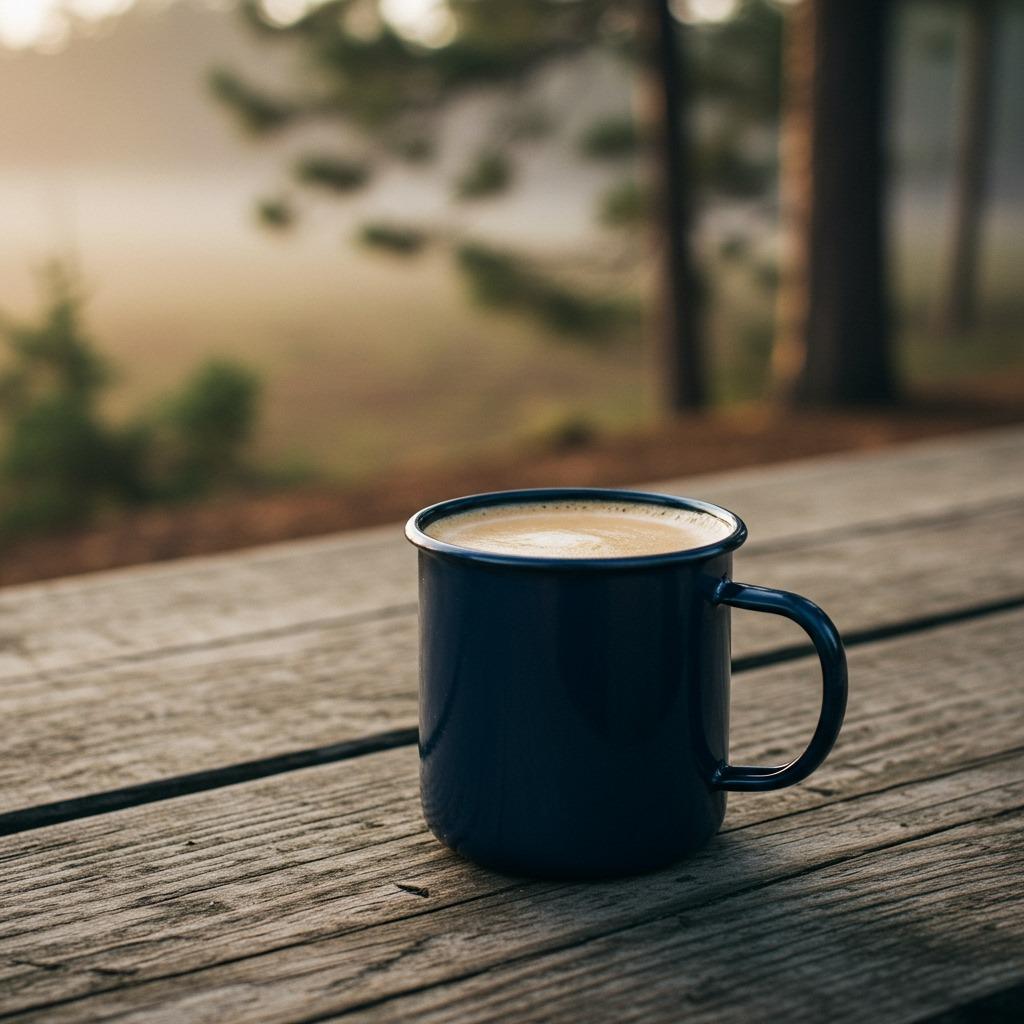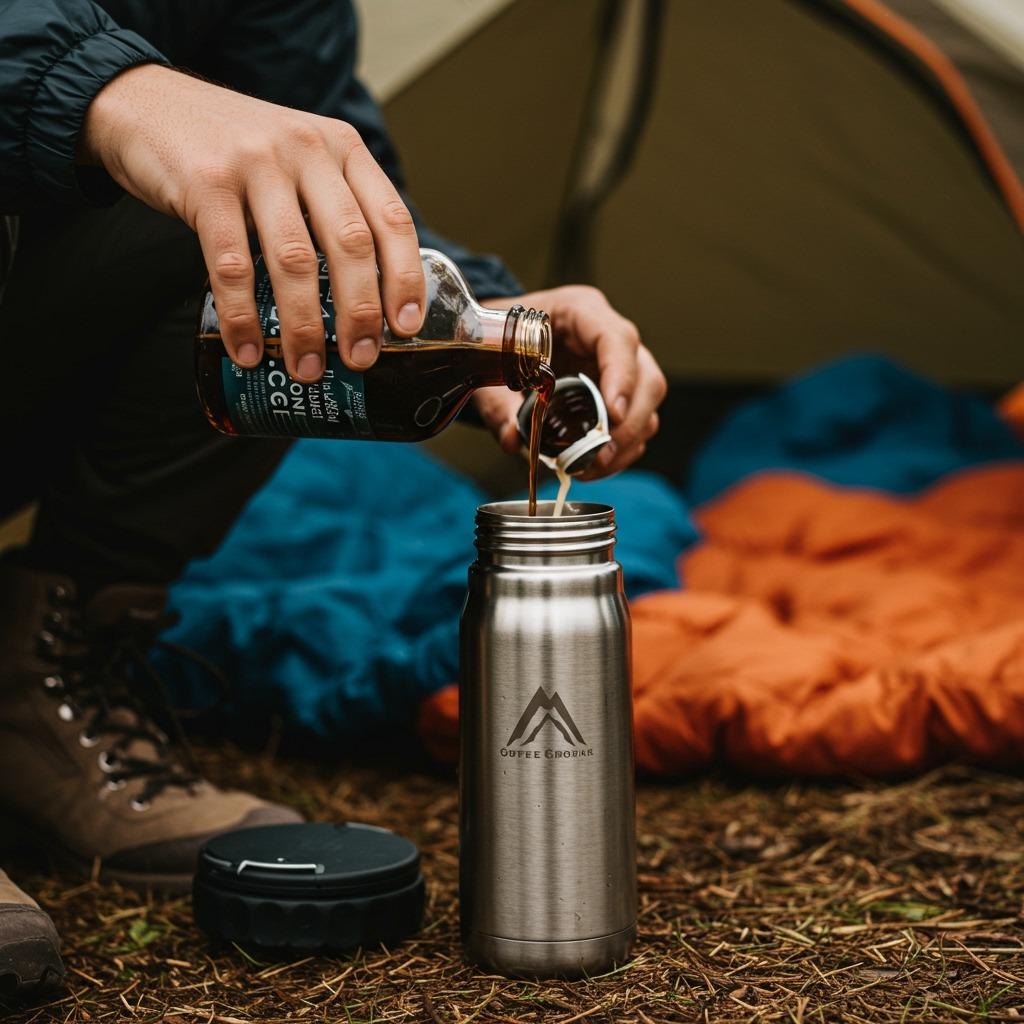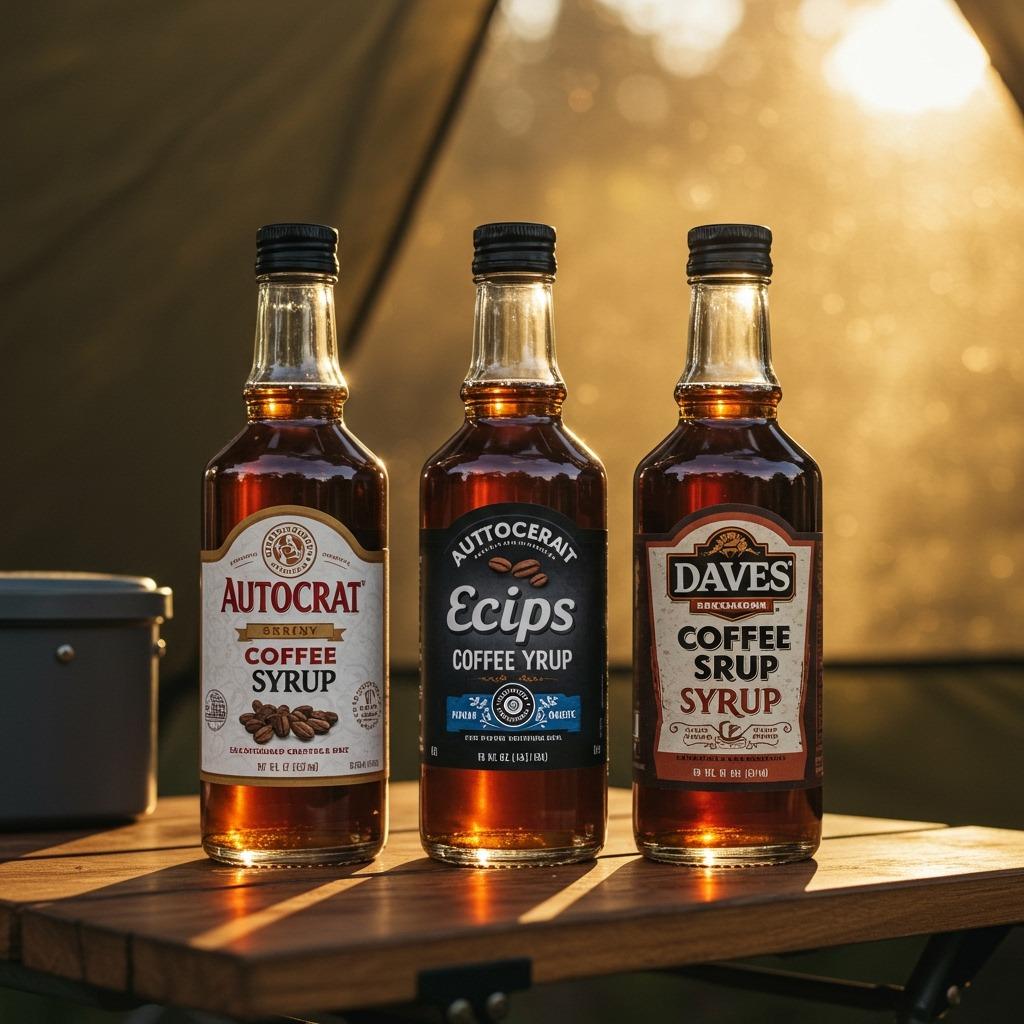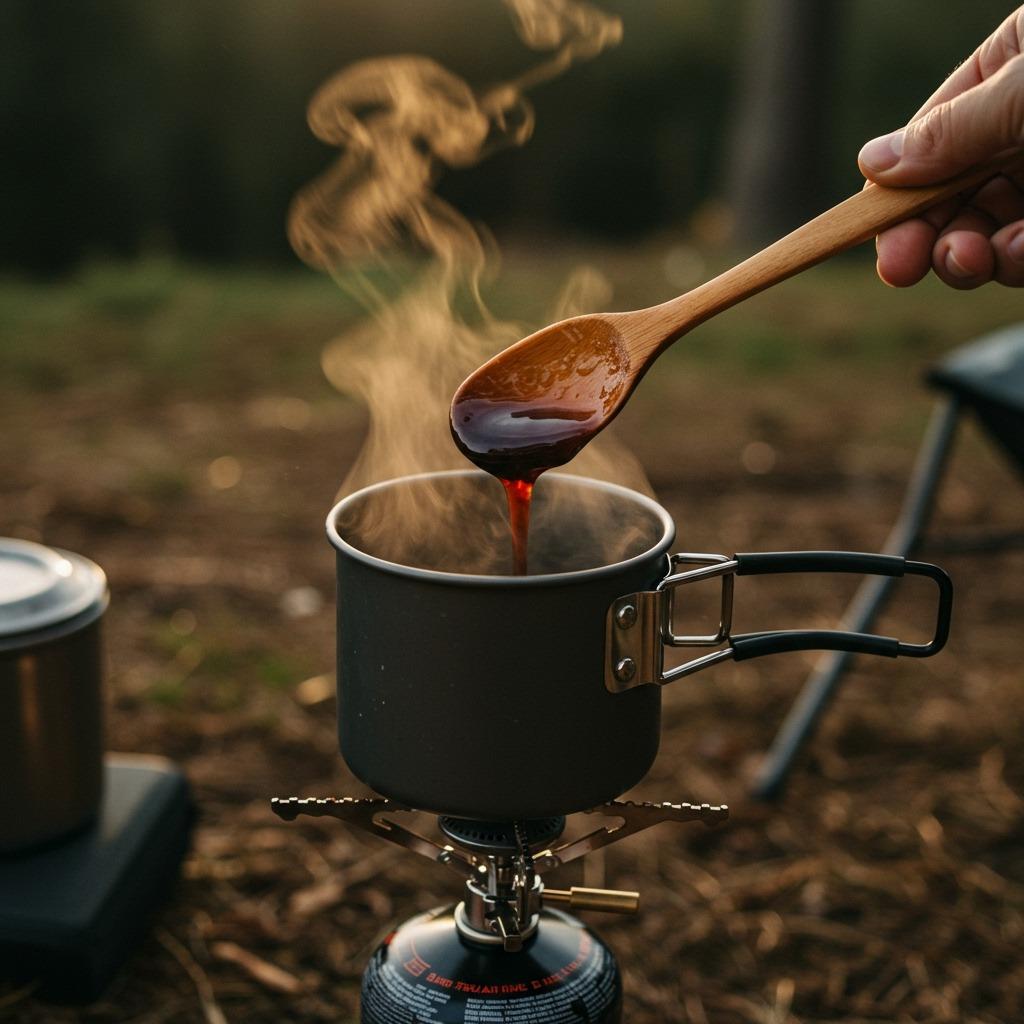Last September, I was huddled around a campfire in the Adirondacks when my tent-mate pulled out something I’d never seen before. She poured cold milk into her metal camp mug, added a splash of dark syrup, stirred it up, and took a long, satisfied sip. “Ever tried coffee milk?” she asked, grinning at my confused expression. That first taste changed everything—sweet, creamy, with just enough coffee kick to wake me up without the bitter edge I usually fought through. Turns out, this Rhode Island classic has been fueling outdoor adventures for decades, and I’d been missing out.
Coffee milk is essentially the outdoor enthusiast’s secret weapon: chocolate milk’s caffeinated cousin that requires zero brewing, packs light, and delivers smooth energy when you need it most. If you’re already exploring the best fuel for your outdoor adventures, our guide to hiking snacks pairs perfectly with this creamy, energizing drink.
What Exactly IS Coffee Milk?
Think of coffee milk as the lovechild of chocolate milk and your morning latte. Instead of cocoa syrup, you mix sweetened coffee syrup with cold milk—dairy or plant-based, your choice. The result? A smooth, mildly caffeinated drink that tastes like liquid comfort food with a gentle buzz.
The magic happens in the coffee syrup itself. Brands like Autocrat, Eclipse, and Dave’s Coffee create concentrated coffee extracts mixed with sugar, producing a thick, dark syrup that dissolves instantly in milk. No brewing required, no waiting for water to boil, no camp stove disasters when you’re half-asleep at sunrise.
Rhode Island officially declared coffee milk its state drink in 1993, but smart outdoor folks have been packing it for decades. It’s shelf-stable, lightweight, and delivers consistent results whether you’re at 10,000 feet or sea level.

The Trail Story That Started My Coffee Milk Obsession
Three years ago, I was attempting my first solo backpacking trip through New Hampshire’s Presidential Range. I’d over-planned everything—detailed trail maps, backup gear, even a spreadsheet for my meals. But I’d underestimated how much I’d crave comfort food after two days of granola bars and dehydrated everything.
On day three, I met Sarah at a trail shelter. She was a seasoned hiker from Providence who’d been doing this route annually for fifteen years. While I fumbled with my camp stove trying to make terrible instant coffee, she simply pulled out a small bottle of Autocrat coffee syrup and a carton of shelf-stable milk.
“Rhode Island trail magic,” she said, mixing up two cups. “My grandmother taught me this trick in 1985.”
That coffee milk hit different. Sweet enough to feel like a treat, caffeinated enough to power through the morning climb, and nostalgic in a way that reminded me why I love simple pleasures in wild places. Sarah explained that coffee milk had been a New England staple since the 1930s—mill workers, fishermen, and outdoor workers all relied on it for quick energy without the fuss.
For those just starting their outdoor journey, understanding what gear works and what doesn’t is crucial. Check out our comprehensive primitive camping guide to learn essential skills that complement simple pleasures like coffee milk.
Why Coffee Milk Works So Well Outdoors
After three years of packing coffee syrup on every camping trip, I’ve figured out exactly why this drink is perfect for outdoor adventures:
Zero Preparation Time
When you’re breaking camp at 5 AM or need caffeine after setting up in the rain, coffee milk delivers instantly. No fire building, no waiting for water to heat, no cleaning a French press afterward.
Lightweight and Compact
A 16-ounce bottle of coffee syrup weighs less than a bag of coffee beans and takes up minimal pack space. Mix with powdered milk or grab fresh dairy at the last resupply stop.
Temperature Flexible
Coffee milk works perfectly cold, but you can also warm it over a camp stove for chilly mornings. The syrup dissolves completely either way.
Customizable Strength
Want more coffee flavor? Add extra syrup. Need it sweeter? The syrup already contains sugar, but you can adjust it to taste. Lactose intolerant? Oat milk works beautifully.
Kid and Beginner Friendly
Coffee milk’s mild flavor makes it perfect for introducing kids or coffee-hesitant partners to morning caffeine rituals without overwhelming bitterness.

How to Make Perfect Coffee Milk Every Time
The beauty of coffee milk lies in its simplicity, but there are a few tricks to get it just right:
Basic Recipe:
- 8 oz cold milk (any type)
- 1-2 tablespoons coffee syrup
- Stir well, adjust to taste.
Pro Tips for Outdoor Brewing:
- Pack syrup in leak-proof bottles – I learned this the hard way when Autocrat syrup leaked all over my sleeping bag
- Use a wide-mouth water bottle for mixing – easier to add syrup and shake vigorously.
- Bring a small whisk or spoon – coffee syrup can be thick, especially in cold weather.
- Try different milk ratios – 2% dairy milk creates the classic texture, but oat milk adds richness.
Temperature Variations:
For hot coffee milk, warm your milk gently over a camp stove (don’t boil), then add syrup. For iced versions, pack extra ice or use cold stream water to chill your bottle.
The most popular brands each have distinct personalities. Autocrat tastes sweeter and mellower—perfect for beginners. Eclipse has a bolder coffee flavor that satisfies serious caffeine lovers. Dave’s Coffee syrup sits somewhere in between with notes of vanilla.
You can also make DIY coffee syrup at home by combining strong cold brew with simple syrup, though the convenience factor drops significantly.
The Science of Why It Works So Well
Coffee milk delivers approximately 35-50mg of caffeine per 8-ounce serving—roughly half the amount in a cup of brewed coffee, but with sustained energy thanks to the milk’s protein and fat content. The sugar in the syrup provides quick energy, while the dairy creates a slower release that prevents the crash you might get from straight coffee on an empty stomach.
For outdoor activities, this moderate caffeine level hits a sweet spot. It’s enough to increase alertness and improve focus for navigation or technical climbing, but not so much that you’ll get jittery hands when handling rope or camp stoves.
The milk also provides essential electrolytes and calories that pure coffee lacks—especially important when you’re burning through energy reserves on long hikes or cold camping trips. Many endurance athletes actually use chocolate milk as recovery fuel, and coffee milk offers similar benefits with the added caffeine boost.
When you’re planning longer adventures, understanding proper nutrition becomes critical. Our guide to easy camping meals for family includes complementary breakfast ideas that work perfectly alongside coffee milk.

Regional Variations and Where to Find Them
While Rhode Island claims coffee milk as its signature drink, variations exist throughout New England and beyond:
Massachusetts: Often mixed stronger, sometimes with a splash of cream
Connecticut: Frequently served at diners alongside traditional breakfast
Maine: Fishing communities have embraced it as pre-dawn fuel
Vermont: Some makers add maple syrup for extra sweetness
Outside New England, coffee milk remains relatively unknown, making it a fun discovery for traveling outdoor enthusiasts. You’ll find coffee syrup at most New England grocery stores, gas stations, and even some outdoor gear shops.
Online ordering has made national access easier—Amazon carries all major brands, and some companies ship directly. For serious outdoor use, I recommend ordering several bottles at once since shipping costs add up.
International variations exist, too. In some Caribbean islands, similar drinks use condensed milk and coffee concentrate. Italian “caffè e latte freddo” shares DNA with coffee milk but uses espresso instead of syrup.
Coffee Milk vs. Other Camp Beverages
How does coffee milk stack up against other outdoor caffeine options?
vs. Instant Coffee:
Coffee milk wins on taste and convenience, but loses on pack weight for long trips. Instant coffee travels lighter but requires hot water and tastes harsh.
vs. Energy Drinks:
Coffee milk provides gentler, sustained energy without artificial ingredients or excessive caffeine. Energy drinks offer more stimulation but often cause crashes and don’t pack well.
vs. Tea:
Tea requires steeping time and hot water, though it packs lighter. Coffee milk offers more calories and protein, making it a better meal replacement fuel.
vs. Cold Brew Concentrate:
Cold brew concentrates travel well and offer stronger coffee flavor, but require dilution planning and often taste bitter without added sweeteners.
For most outdoor scenarios lasting 1-5 days, coffee milk strikes the best balance of convenience, taste, and nutritional value.
Making Your Own Coffee Syrup
While commercial syrups offer convenience, making your own allows customization and reduces packaging waste on longer trips:
Basic Homemade Coffee Syrup:
- Brew 2 cups of strong coffee (use double your normal grounds)
- Add 1 cup of sugar while the coffee is hot.
- Simmer until reduced by half (about 15 minutes)
- Cool and store in clean bottles
- Refrigerate for up to 3 weeks.
Outdoor-Optimized Version:
- Use brown sugar for a deeper flavor
- Add 1 tablespoon vanilla extract.
- Include a pinch of salt to enhance coffee notes.
- Make in larger batches and portion into small bottles.
Advanced Techniques:
Cold brew syrup takes longer but produces smoother results. Combine 1 cup coarse grounds with 2 cups water, steep 12 hours, strain, then reduce with sugar as above.
Some outdoor chefs experiment with additions like cinnamon, cardamom, or even a splash of bourbon for special occasion camping trips.
Remember that homemade syrups may not have the shelf stability of commercial versions, so plan accordingly for longer expeditions.
External resources like REI’s camp cooking guide provide additional context for outdoor food preparation that complements coffee milk brewing.

Advanced Coffee Milk Techniques for Serious Campers
Once you’ve mastered basic coffee milk, several advanced techniques can elevate your outdoor coffee game:
Layered Coffee Milk: Pour cold milk first, then slowly add syrup without stirring to create beautiful layers. Great for camp photography and Instagram-worthy morning shots.
Protein Coffee Milk: Add a scoop of unflavored or vanilla protein powder for sustained energy on demanding hiking days. Shake vigorously in a blender bottle.
Spiced Versions: Pack small containers of cinnamon, nutmeg, or cardamom to customize flavors. Particularly excellent for fall camping trips.
Coffee Milk French Toast: Use coffee milk instead of regular milk in your camp French toast batter for a caffeinated breakfast upgrade.
Float Style: Top with a dollop of whipped cream (pack instant whipping powder) for a dessert-like treat around evening campfires.
Concentrate Method: Pre-mix coffee syrup with small amounts of milk to create a thick concentrate, then dilute with water as needed. Saves cooler space on longer trips.
For those interested in expanding their outdoor cooking repertoire beyond simple drinks, our camping breakfast ideas guide offers complementary morning meal strategies.
Storage and Safety Considerations
Coffee syrup is generally shelf-stable until opened, but outdoor conditions require special attention:
Temperature Management: Extreme heat can cause separation in both syrup and milk. Store in cool, shaded areas of your pack.
Container Selection: Glass bottles travel well but add weight. Consider transferring to lightweight, unbreakable bottles for longer trips.
Milk Safety: Fresh dairy milk requires refrigeration. For multi-day trips, shelf-stable milk or powdered alternatives eliminate spoilage risk.
Cleaning Protocol: Rinse containers thoroughly after each use. Coffee syrup residue can attract insects and create sanitation issues.
Leave No Trace: Pack out all containers. Coffee syrup bottles are fully recyclable, and most can be refilled for future trips.
Water Source Considerations: If using stream or lake water to clean containers, ensure it’s properly filtered or treated to avoid contamination.
The Leave No Trace Center provides comprehensive guidelines for responsible outdoor practices that apply to all camp cooking activities.
Coffee Milk Culture and Community
Beyond its practical benefits, coffee milk connects outdoor enthusiasts to New England’s working-class heritage. Mill workers, fishermen, and loggers relied on this simple drink for decades before it became trendy.
Modern outdoor communities have embraced coffee milk as a way to slow down and savor simple moments. Unlike the rush of grabbing coffee on the way to work, preparing coffee milk at camp encourages mindful morning rituals.
Trail Magic: Many experienced New England hikers carry extra coffee syrup to share with fellow adventurers—a sweet way to spread regional culture.
Family Traditions: Parents often introduce kids to coffee milk as their “first coffee,” creating positive associations with outdoor mornings that last a lifetime.
Social Media: #coffeemilk and #rhodeislandcoffeemilk hashtags showcase outdoor enthusiasts sharing their morning rituals from campsites worldwide.
The drink’s simplicity also appeals to minimalist campers and ultralight backpackers who appreciate multipurpose foods that deliver nutrition, caffeine, and comfort in a single package.
Health Benefits and Nutritional Profile
Coffee milk offers several nutritional advantages over other camp beverages:
Sustained Energy: The combination of coffee’s caffeine, milk’s protein, and syrup’s carbohydrates provides both immediate and long-term energy.
Electrolyte Balance: Milk naturally contains potassium, sodium, and calcium—essential minerals lost through sweating during outdoor activities.
Digestive Ease: Many people who experience stomach upset from black coffee tolerate coffee milk well due to milk’s buffering effect.
Hydration: Unlike pure coffee, which can have mild diuretic effects, coffee milk contributes positively to overall fluid intake.
Mood Enhancement: The familiar, comforting taste can provide psychological benefits during challenging outdoor situations.
Caloric Density: 8 ounces provides approximately 150-200 calories—significant fuel for active outdoor enthusiasts.
However, people with lactose intolerance should use plant-based milk alternatives, and those monitoring sugar intake should account for the syrup’s sweetness.
For comprehensive outdoor nutrition planning, the American Hiking Society’s nutrition guide offers evidence-based recommendations that complement coffee milk consumption.
Seasonal Applications and Weather Considerations
Coffee milk adapts well to different outdoor conditions throughout the year:
Spring Camping: Perfect for cool mornings when you want caffeine but not the heat of hot coffee. Pairs excellently with hearty breakfast foods as you burn winter calories.
Summer Adventures: Serves as refreshing morning fuel before hot days. Consider packing extra ice or cooling packs to maintain milk freshness.
Fall Hiking: The comfort-food aspect becomes especially appealing as temperatures drop. Hot coffee milk provides warmth without requiring complex preparation.
Winter Camping: Hot coffee milk delivers essential calories and warmth. The milk’s fat content helps maintain body temperature in cold conditions.
Rainy Weather: When building fires becomes impossible, coffee milk provides hot caffeine using just a simple camp stove.
High Altitude: The moderate caffeine content works well at elevation, where some people experience coffee sensitivity.
Troubleshooting Common Issues
Every coffee milk enthusiast eventually encounters these challenges:
Syrup Too Thick: Cold temperatures can make syrup viscous. Warm the bottle in your hands or sleeping bag before mixing.
Milk Separation: If shelf-stable milk separates, shake vigorously. This is normal and doesn’t indicate spoilage.
Weak Flavor: Start with less milk and add gradually. It’s easier to dilute strong coffee milk than to strengthen weak versions.
Equipment Cleaning: Coffee syrup residue can be stubborn. Warm water and thorough rinsing prevent sticky buildup.
Wildlife Attraction: Sweet smells can attract animals. Store coffee syrup in bear-proof containers when required.
Spillage Prevention: Always secure bottles tightly. Coffee syrup stains are difficult to remove from outdoor gear.
For those developing comprehensive outdoor skills, our camping hacks guide includes additional problem-solving strategies for common outdoor challenges.
Frequently Asked Questions
What is coffee milk exactly?
Coffee milk is a sweet beverage made by mixing cold milk with coffee syrup—a concentrated blend of coffee extract and sugar. Think chocolate milk, but with coffee flavor instead of cocoa.
Can you make coffee milk with plant-based milk?
Absolutely! Oat milk, almond milk, soy milk, and other plant-based alternatives work perfectly. Oat milk creates the richest, most similar texture to dairy milk.
How much caffeine is in coffee milk?
Coffee milk contains approximately 35-50mg of caffeine per 8-ounce serving—about half the amount in regular brewed coffee. This provides gentle energy without excessive stimulation.
Where can I buy coffee syrup outside New England?
Amazon, Walmart online, and specialty food stores carry major brands like Autocrat and Eclipse. Many New England companies also ship directly nationwide.
Is coffee milk just for kids?
Not at all! While coffee milk is kid-friendly due to its sweet, mild flavor, adults appreciate it for outdoor adventures, nostalgic comfort, and convenient caffeine delivery. Many New England adults drink it regularly.
How long does coffee syrup last once opened?
Commercial coffee syrups typically last 6-12 months refrigerated after opening. For outdoor trips, unopened bottles are shelf-stable and travel well for several days without refrigeration.
Coffee milk represents everything great about outdoor culture—simple ingredients creating something greater than their parts, regional traditions shared around campfires, and practical solutions that enhance rather than complicate wilderness experiences. Whether you’re planning a weekend car camping trip or a multi-day backpacking adventure, this Rhode Island classic deserves a spot in your pack. The next time you’re watching sunrise from your sleeping bag, wondering how to make morning caffeine special without the fuss, remember that sometimes the best discoveries come in simple glass bottles from places you’ve never been.
